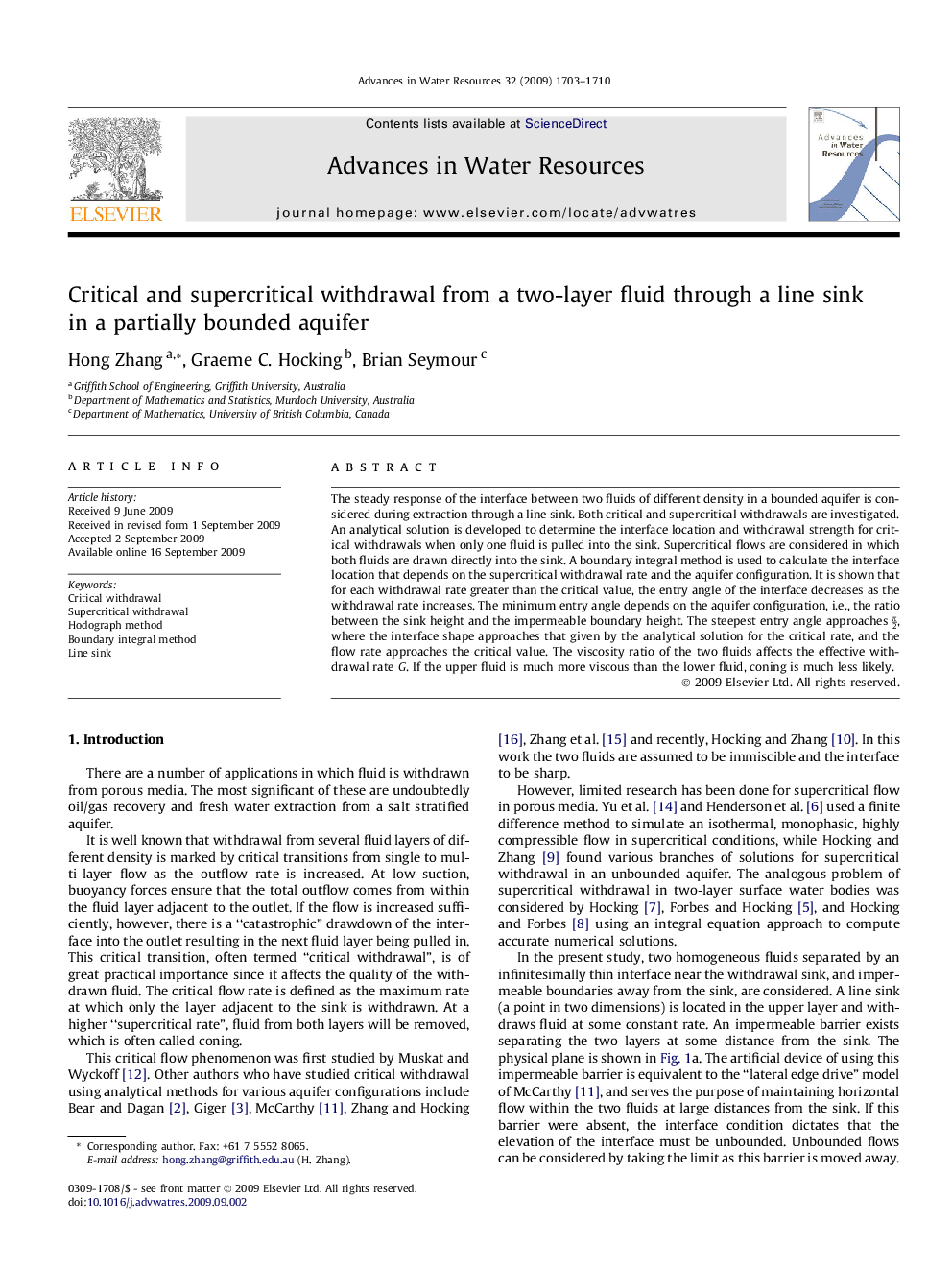| Article ID | Journal | Published Year | Pages | File Type |
|---|---|---|---|---|
| 4526139 | Advances in Water Resources | 2009 | 8 Pages |
Abstract
The steady response of the interface between two fluids of different density in a bounded aquifer is considered during extraction through a line sink. Both critical and supercritical withdrawals are investigated. An analytical solution is developed to determine the interface location and withdrawal strength for critical withdrawals when only one fluid is pulled into the sink. Supercritical flows are considered in which both fluids are drawn directly into the sink. A boundary integral method is used to calculate the interface location that depends on the supercritical withdrawal rate and the aquifer configuration. It is shown that for each withdrawal rate greater than the critical value, the entry angle of the interface decreases as the withdrawal rate increases. The minimum entry angle depends on the aquifer configuration, i.e., the ratio between the sink height and the impermeable boundary height. The steepest entry angle approaches Ï2, where the interface shape approaches that given by the analytical solution for the critical rate, and the flow rate approaches the critical value. The viscosity ratio of the two fluids affects the effective withdrawal rate G. If the upper fluid is much more viscous than the lower fluid, coning is much less likely.
Related Topics
Physical Sciences and Engineering
Earth and Planetary Sciences
Earth-Surface Processes
Authors
Hong Zhang, Graeme C. Hocking, Brian Seymour,
